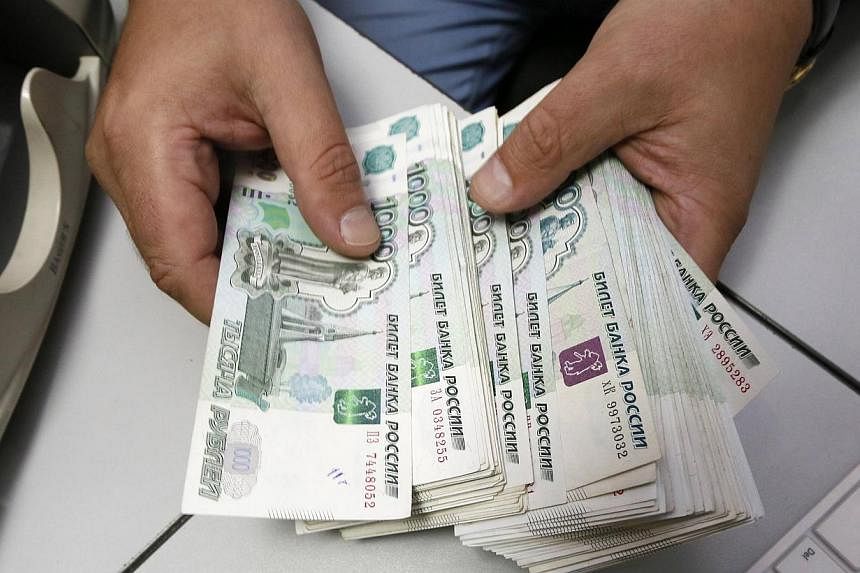NEW YORK (Bloomberg) - For all of the progress Russia has made over the past week in stabilising the rouble and quelling its financial crisis, ratings agency Standard & Poor's has delivered a reminder of just how precarious the situation remains.
S&P said it's considering cutting Russia's credit-rating to junk, or below investment grade, for the first time in a decade as the looming recession spurs concern that the nation's banks will face mounting bad loans.
Hours before S&P released its statement yesterday, lawmakers sought to address that very concern, pushing through legislation that will allow President Vladimir Putin's government to bail out struggling lenders.
While the move was anticipated - bond investors have been trading the country's debt as if it were junk-rated for weeks - the timing was odd.
Policy makers have orchestrated a 47 per cent rebound in the rouble since it plunged to a record-low 80.10 a US dollar Dec 16 by pushing exporters to bring money back into the country and by creating a credit crunch that cut off some investors from the local currency needed to buy dollars.
"Serious damage has been done to the economy," Dennis Gartman, an economist who edits and publishes the Gartman Letter, said in an interview on Bloomberg Radio in New York. "This is going the wrong way."
While the rouble extended gains into a third day, its still down about 40 per cent versus the greenback this year, the second- worst performance among more than 170 currencies tracked by Bloomberg after the Ukrainian hryvnia.
Russia's currency is headed for its worst annual drop against the greenback since the country defaulted on its debt in 1998, according to Bloomberg generic pricing.
Oil's plunge to a five-year low and sanctions over Russia's involvement in the Ukraine conflict have pushed the economy of the world's biggest energy exporter to the verge of recession.
To stem the crisis, Russia's central bank has spent one- fifth of its international reserves, raised benchmark interest rates six times since March and engineered a cash squeeze in the financial system. While the efforts have worked to stabilise the rouble, they are also undermining the banking sector.
Russia's central bank put National Bank Trust, the country's 15th-biggest lender based on retail deposits, under its control Dec 22, the first bailout since the currency crisis started. Lawmakers rushed legislation through the lower house of parliament the next day, allowing the Deposit Insurance Agency to buy stakes in banks before they face bankruptcy proceedings.
S&P said in its statement that there's at least a 50 per cent chance that Russia's rating will be lowered to junk within 90 days as it put the country on negative credit watch. Moody's Investors Service and Fitch Ratings rank Russia one step higher than S&P, which lowered its rating one level in April to BBB-.
The move "stems from what we view as a rapid deterioration of Russia's monetary flexibility and the impact of the weakening economy on its financial system," S&P said. The ratings company expects to conclude its review in mid-January.
The ruble held its gains after the S&P announcement, suggesting investors have already priced in the possibility of credit downgrades. The currency appreciated 2.3 per cent to 54.5035 a US dollar yesterday.

